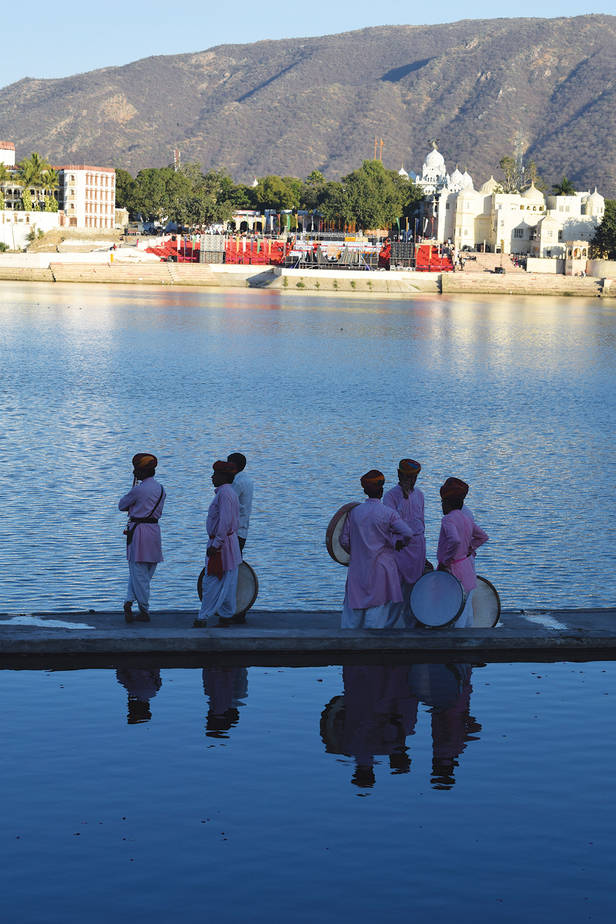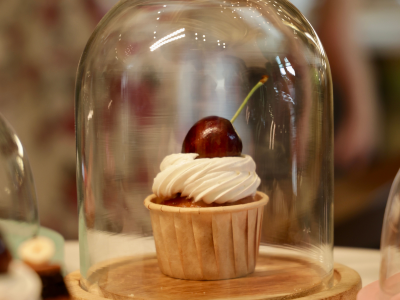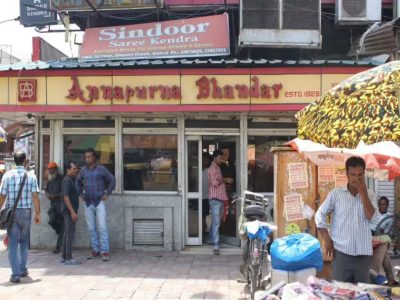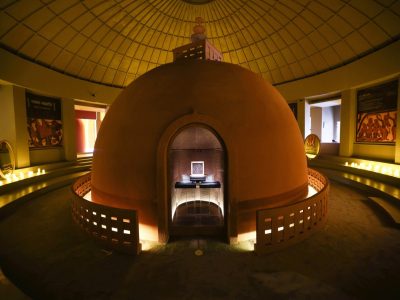The little town of Pushkar, with its annual camel fair and the only Brahma temple in the world, is laced with folklore and mythology
Sand dunes stretch into the infinite sky as the sun lowers into the Aravalli ranges. The camel cart sways through the narrow alleys. The decked up camel, colourful cart with its little tinkling bells, light up the little, sleepy town. I wonder if I will reach the temple of Brahma before it closes for the evening. Built in the 14th century CE, it is cited as the only temple dedicated to the creator. According to Hinduism, the three gods—Brahma-Vishnu-Shiva—control the functions of creation, preservation and destruction respectively. But folk tales say the creator has a series of curses and is not worshipped to banish the sufferings on Earth.
Digging into the legends, one story goes that once Vishnu and Brahma were arguing about who the more important one among them was. They approached Shiva who said that the one who could view the top of Shiva’s head would be the more important one. Shiva assumed a huge form stretching across the universe. Both Vishnu and Brahma tried to find the head, but in vain. Suddenly Brahma noticed a thazampu (ketaki) flower floating in the waters. The flower told him that she fell from Shiva’s head a thousand years ago. Brahma requested the flower to lie, saying that he had seen the top of Shiva’s head. And an angry Shiva cursed Brahma that he would never be worshipped on Earth. The ketaki flower was also cursed and is not used in holy rituals.
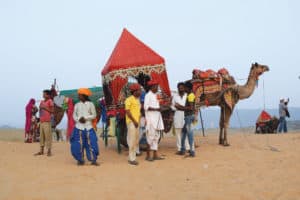
As per the Saraswati Purana, Brahma created his beautiful daughter Saraswati, the goddess of learning. But then an enamored Brahma married her. The result: Vishnu cursed Brahma that he would not be worshipped anywhere except in Pushkar.
The Market
Suddenly, the cart halts and Pushkar’s colours fill up the surroundings. Rows of shops and vendors selling prasad, sindoor andcoconut, line the street leading to the temple. A plate of pooja articles in one hand, shoes left with the shopkeeper, I am nervous to meet the creator.
About 15 minutes in the queue, and I catch a sight of the god with four heads. The four heads depict the four Vedas. Brahma does not have any weapons, but a string of prayer beads called the akshamālā. The sound of Gayatri mantra fills the air as I climb down a few steps to see a shivalinga.
Out in the open, the aroma of kachoris and gol gappas fills the air. A vendor was selling rabri lassi in a kulhad. Tables lined with gulkand, rose sherbets and attar attract buyers. I enter a shop, pulled by the fragrance of rose. The shopkeeper tells me that rose is cultivated in the area, so sherbets and gulkand are as fresh as they can be. The attar bottle cost only Rs 150. There are quite a few units making these and camel leather products in the neighbouring areas.
The market has some great pizzerias, juice shops, cotton clothes and cheap camel leather stuff. The more frequent visitors being Israelis, there are signs in Hebrew all around. I did sight a mosque and a gurudwara too but did not venture in. There are small guesthouses and homestays also in this area.
Villagers from the interiors of the desert state come to sell rustic weapons, more like artefacts, and handicrafts. Mostly Indians buy weapons, a shopkeeper says, as one can’t take them out of the country. There are blankets and decorations for the tall creatures. It is famous for the camel fair, after all. Camels and other livestock are traded, competitions held and the children enjoy the rustic giant wheel and other swings. For days, the sellers stay in a camp and the area is a grand party till kartik purnima (November 23, this year).
The Holy Pond
Leaving behind the colours of the market, I walk to the holy pond where a dip purifies one of all the sins. I don’t dare to take the dip seeing the dark waters but the authorities do clean this pond once a year before the fair, I am told. The entire pond is surrounded by ghats, some named after the patrons who funded the construction of that spot, others on nature. A parikrama of this lake is said to please the pantheon of gods, who assemble on kartik purnima here.
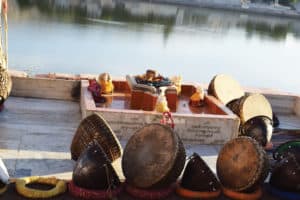
There is a Shiva temple in the middle of the lake. Offering my share of roses to the god, I sit down to watch the pigeons, cows, cats, dogs, devotees and pundits offering prayers for the ancestors. Rituals done, a pundit regales us with more legends. Pushkar is one the five sacred pilgrimages for the Hindus and one of the world’s oldest existing cities. The lake is formed by Shiva’s tears. Legend goes that two tears fell from Shiva’s eyes after the death of his wife Sati. From those, emerged two holy ponds– one at Pushkar and the other at Ketaksha which means raining eyes in Sanskrit.
In Sanskrit, Pushkar means blue lotus. The gods released a swan with a lotus in its beak and let it fall on earth where Brahma would perform a grand yagna. Brahma came to know that a demon, Vajranash, was killing people here. He intoned a mantra on a lotus flower to kill the demon. The parts of flower fell on three places, later known as Jyaistha, Madhya and Kanistha Pushkar. After this Brahma performed the mahayagna to protect the place from demons. Saraswati was needed to offer ahuti but was not found. So Gayatri, a Gurjar girl, was married to Brahma and performed the yagna. A furious Saraswati cursed Brahma to be worshipped only in Pushkar. And priests taking care of the Brahma temple are from the Gurjar community.
Now, Pushkar houses a temple dedicated to Savitri or Saraswati and Gayatri. Savitri resides on top of Ratnagiri hill and the sunset here is spectacular, offering a fantastic view of the town. We take the cable car up but one can choose to climb the 1,000 winding steps cut into the hill too. Gayatri rests in a temple where the parikrama of Pushkar pond begins.
As the sky turns dark, the little ripples in the pond shine with the city’s lights. The little town looks charming but shopkeepers are closing their shutters. And we sway back to the camp in the camel cart through the starry night.
Reaching Pushkar
There are trains to Ajmer. You could drive down to Pushkar or take a local train. The nearest airport is in Jaipur.
Where to stay
Orchard Hospitality has luxury tents in the middle of an amla orchard. Here, you get a taste of Rajasthan in its vegetarian avatar. You can watch the famous kalbeliya dance performances, walk around the village or simply laze around.
Best time to visit
In November, when the camel fair is held and the weather is cool. A desert safari on a full moon night is a must to experience

